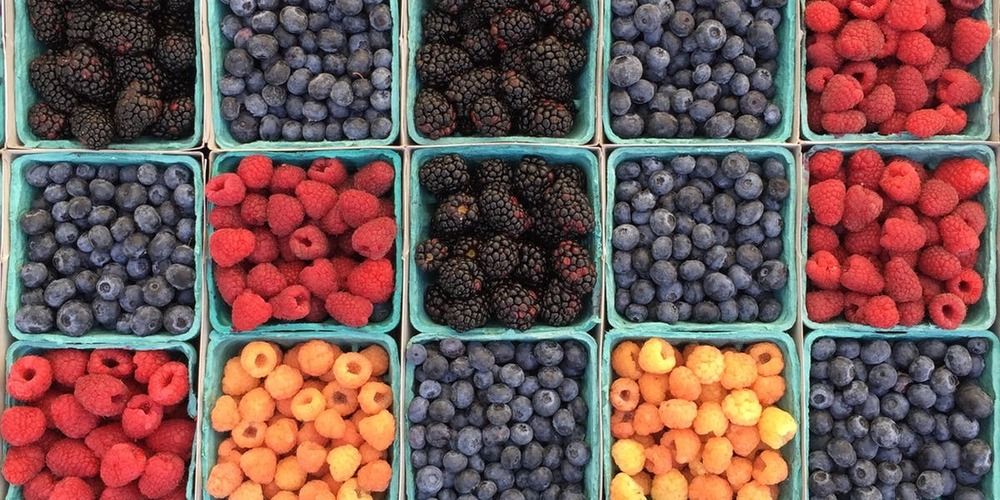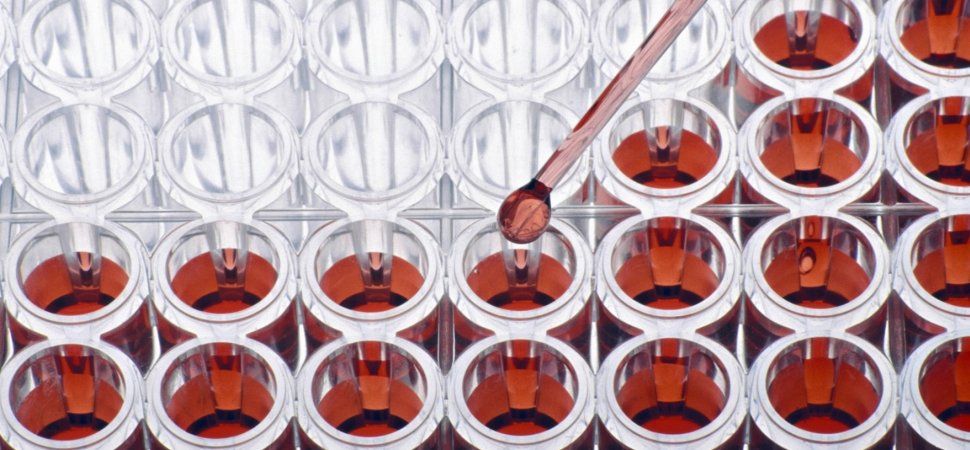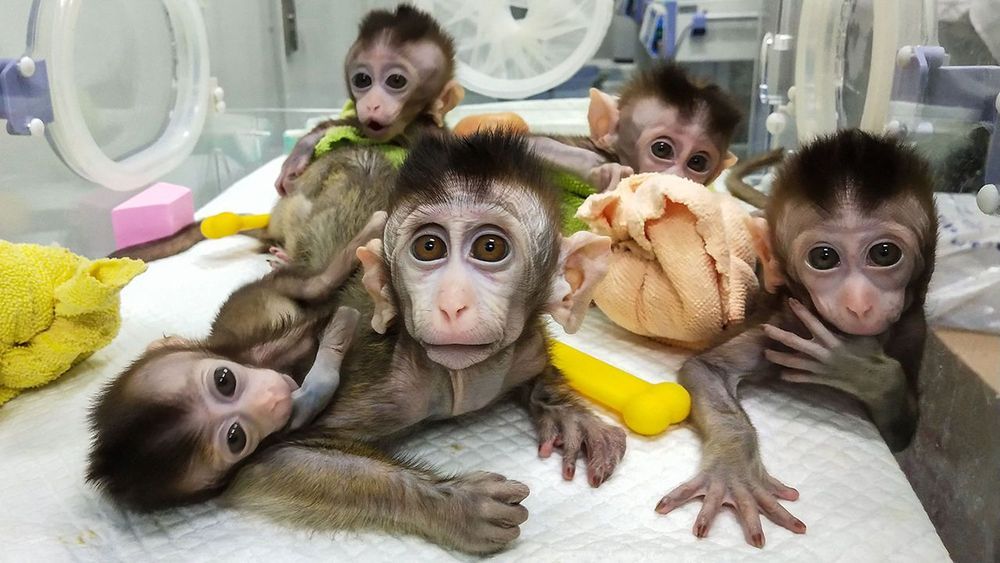Department of medical physics, ahvaz jundishapur university of medical sciences, ahvaz, iran.
Faculty of medicine, Department of Anatomical Sciences, Semnan University of Medical Sciences, Semnan, Iran.

This is Growing Underground, it’s an underground farm founded in 2012 by Richard Ballard and Steven Dring.
The farm sits inside a WWII bomb shelter. Eight of these shelters were built across London during the war, and they were each built to house around 8,000 people.
The tunnel system is 6,500m2 and Growing Underground currently only use 1/6th of the space. The farm uses hydroponic systems and LED lighting to simulate a day and night cycle.
The process takes place entirely underground, from the sowing of the seeds to the harvesting and packaging.
____________________________________
FACEBOOK: https://www.facebook.com/techinsider
TWITTER: https://twitter.com/techinsider
INSTAGRAM: https://www.instagram.com/tech_insider/



Nevertheless, to date, most of the wealth generated by advances in A.I. and robotics has been acquired by the executives of technology companies. It’s time for the benefits of the A.I. revolution to be broadly distributed through an expanded social safety net.
Unfortunately, members of Congress are taking the opposite path and have proposed cuts to a range of social programs. Several hundred thousand people arrived in Washington on Saturday to protest these cuts. During the demonstration, masked agitators threw rocks at the autonomous drones deployed for crowd control; in response, drones dispensed pepper spray on the protesters below, causing a stampede. More than 20 people were injured and treated at local hospitals; one protester died of his injuries on Monday. The police detained 35 people at the scene; 25 more arrests have been made since then, after authorities used facial recognition technology to identify protesters from surveillance video.
Punishing the poor who were harmed by economic disruptions has been a mistake repeated throughout American history. During the Industrial Revolution, machines displaced many artisans and agricultural workers. To deter these unemployed workers from seeking public relief, local governments set up poorhouses that required residents to perform hard labor. And between 1990 and 2020, the federal government — and some state governments — repeatedly cut social program spending even as middle-class jobs disappeared as a result of outsourcing and automation. Workers who didn’t have the skills to thrive in the knowledge economy were resigned to join the underclass of service workers.

With the rise of fad diets, “superfoods,” and a growing range of dietary supplement choices, it’s sometimes hard to know what to eat.
This can be particularly relevant as we grow older and are trying to make the best choices to minimize the risk of health problems such as high blood pressure, obesity, type 2 diabetes, and heart (cardiovascular) problems.
We now have evidence these health problems also all affect brain function: they increase nerve degeneration in the brain, leading to a higher risk of Alzheimer’s disease and other brain conditions including vascular dementia and Parkinson’s disease.

In the 1990s farmed fish (aquaculture) accounted for about one-quarter of global seafood production according to the UN Food and Agricultural Organization. Now, with demand rising and the ocean’s resources being steadily depleted, aquaculture has overtaken wild fishery, globally producing more than 100 million metric tonnes of seafood each year.
Artificial intelligence is increasingly used in aquaculture management to analyze water conditions, environmental changes and fish status. And nowhere are these emerging fishing industry technologies more important than in Japan.
According to a report by private research group Yano Economic Research Institute, Japan’s aquaculture market will reach JP¥20.3 billion in 2021, an increase of 53 percent from 2016. AI-powered smart fisheries will account for JP¥1.3 billion, a figure that is rising quickly.

Artificial intelligence hit some key milestones in 2017. At Facebook, chatbots were able to negotiate as well as their human counterparts. A poker-playing system designed by Carnegie Mellon professors mopped the floor with live opponents. There were even some potentially life-saving breakthroughs, like the machine vision system that can determine whether a mole is cancerous with more than 90 percent accuracy—beating out a group of dermatologists.
From agriculture to medicine and beyond, plenty of startups are using AI in innovative ways. Here are five companies you should expect big things from in 2018.
SoundHound has been around for 13 years, and has spent that time trying to build the most powerful voice assistant ever. The startup began by creating a Shazam-like song recognition app called Midomi; now, the newly released Hound app is capable of answering complex voice prompts like, “Show me all below-average-priced restaurants within a five-mile radius that are open past 10 p.m. but don’t include Chinese or pizza places,” or “What’s the weather like in the capital of the biggest state in the U.S.?”
Ira Pastor, ideaXme longevity and aging Ambassador and Founder of Bioquark interviews Bill Faloon, Director and Co-Founder, Life Extension Foundation and Founder of The Church Of Perpetual Life.
Ira Pastor Comments:
On the last several shows we have spent time on different hierarchical levels the biologic-architecture of the life, disease and aging process. We’ve spent some time talking about the genome, the microbiome, tissue engineering, systems biology, and dabbled a bit in the areas of quantum biology, organism hydro-dynamics, and even chronobiology.
As exciting and promising as all these research paths are, at the end of the day, in order for them to yield what many people are looking for, that is radically extended healthspans and lifespans, there needs to be an organized system of human translation build around them, integrating these various products, services and technologies, from supplements, to biologics, to functional foods, to cosmeceuticals, to various physio-therapeutic interventions, and so forth, as well as all the related supporting advocacy and education, as biologic aging is truly a multi-factorial, combinatorial process that is never going to be amenable to big pharma’s traditional “single magic bullet” philosophy that it promoted throughout the last century.
For today’s guest, I could think of no one better to talk with us about this topic and take us into the future on this front, than Bill Faloon, Director and Co-Founder, Life Extension Foundation (LEF), a consumer advocacy organization with over 100,000 members that funds research (investing million per year in researchers around the globe) and disseminates information to consumers about optimal health, and more recently in the area of actionable clinical interventions regarding human biologic age reversal, through a fascinating new project called the Age Reversal Network, defined as an open-source communications channel to exchange scientific information, foster strategic alliances, and support biomedical endeavors aimed at reversing degenerative aging.
Bill is also the Founder of The Church Of Perpetual Life, a nonprofit transhumanist organization aiming to combine discussion integrating spirituality, community, and aging scientific research in a single unified forum.
He’s a board member of the Coalition For Radical Life Extension, which is the organizer of annual RAADfest conference (Revolution Against Aging and Death) which is the world’s largest gathering of radical life extension enthusiasts.

In addition to having access to large colonies of monkeys and other species, animal researchers in China face less public scrutiny than counterparts in the United States and Europe. Ji, who says his primate facility follows international ethical standards for animal care and use, notes that the Chinese public has long supported monkey research to help human health. “Our religion or our culture is different from that of the Western world,” he says. Yet he also recognizes that opinions in China are evolving. Before long, he says, “We’ll have the same situation as the Western world, and people will start to argue about why we’re using a monkey to do an experiment because the monkey is too smart, like human beings.”
This story, one in a series, was supported by the Pulitzer Center.
BEIJING, GUANGZHOU, JIANGMEN, KUNMING, AND SHANGHAI—Early one February morning, researchers harvest six eggs from a female rhesus macaque—one of 4000 monkeys chirping and clucking in a massive outdoor complex of metal cages here at the Yunnan Key Laboratory of Primate Biomedical Research. On today’s agenda at the busy facility, outside Kunming in southwest China: making monkey embryos with a gene mutated so that when the animals are born 5 months later, they will age unusually fast. The researchers first move the eggs to a laboratory bathed in red light to protect the fragile cells. Using high-powered microscopes, they examine the freshly gathered eggs and prepare to inject a single rhesus sperm into each one. If all goes well, the team will introduce the genome editor CRISPR before the resulting embryo begins to grow—early enough for the mutation for aging to show up in all cells of any offspring.
But as often happens when eggs are retrieved, all does not go well. Only one egg in this morning’s batch is mature enough to fertilize. “We were a little unlucky today,” says Niu Yuyu, who with facility director Ji Weizhi runs the gene-editing research. The group can afford a little bad luck, though. Through a combination of patience, ingenuity, and enormous animal resources, the team has already used CRISPR to create an astonishing range of genome-edited monkeys to serve as models for studying human diseases.